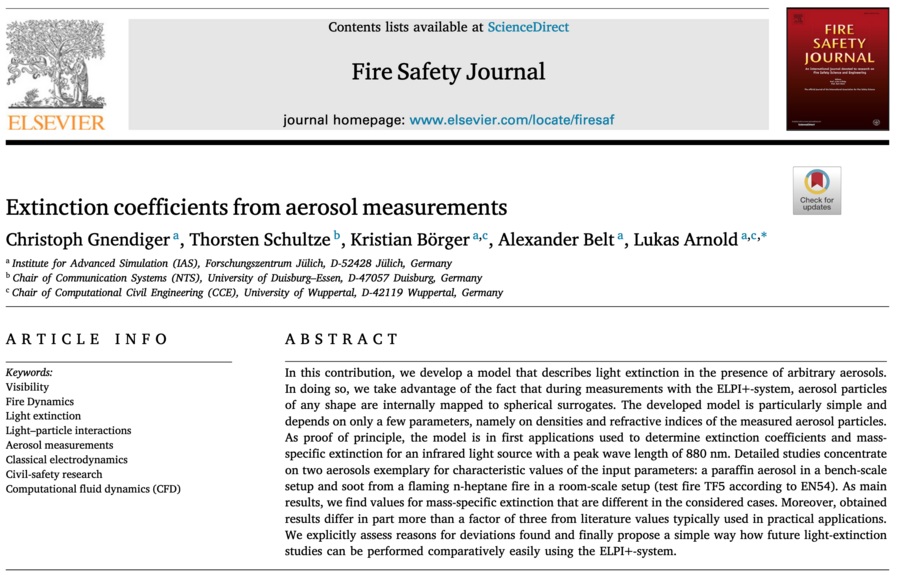Publication – Extinction coefficients from aerosol measurements

A new publication from us has appeared in the Fire Safety Journal. The full article is freely available here.
Title: Extinction coefficients from aerosol measurements
Authors: Christoph Gnendiger, Thorsten Schultze, Kristian Börger, Alexander Belt und Lukas Arnold
Abstract:
In this contribution, we develop a model that describes light extinction in the presence of arbitrary aerosols. In doing so, we take advantage of the fact that during measurements with the ELPI+-system, aerosol particles of any shape are internally mapped to spherical surrogates. The developed model is particularly simple and depends on only a few parameters, namely on densities and refractive indices of the measured aerosol particles. As proof of principle, the model is in first applications used to determine extinction coefficients and mass-specific extinction for an infrared light source with a peak wave length of 880 nm. Detailed studies concentrate on two aerosols exemplary for characteristic values of the input parameters: a paraffin aerosol in a bench-scale setup and soot from a flaming n-heptane fire in a room-scale setup (test fire TF5 according to EN54). As main results, we find values for mass-specific extinction that are different in the considered cases. Moreover, obtained results differ in part more than a factor of three from literature values typically used in practical applications. We explicitly assess reasons for deviations found and finally propose a simple way how future light-extinction studies can be performed comparatively easily using the ELPI+-system.
